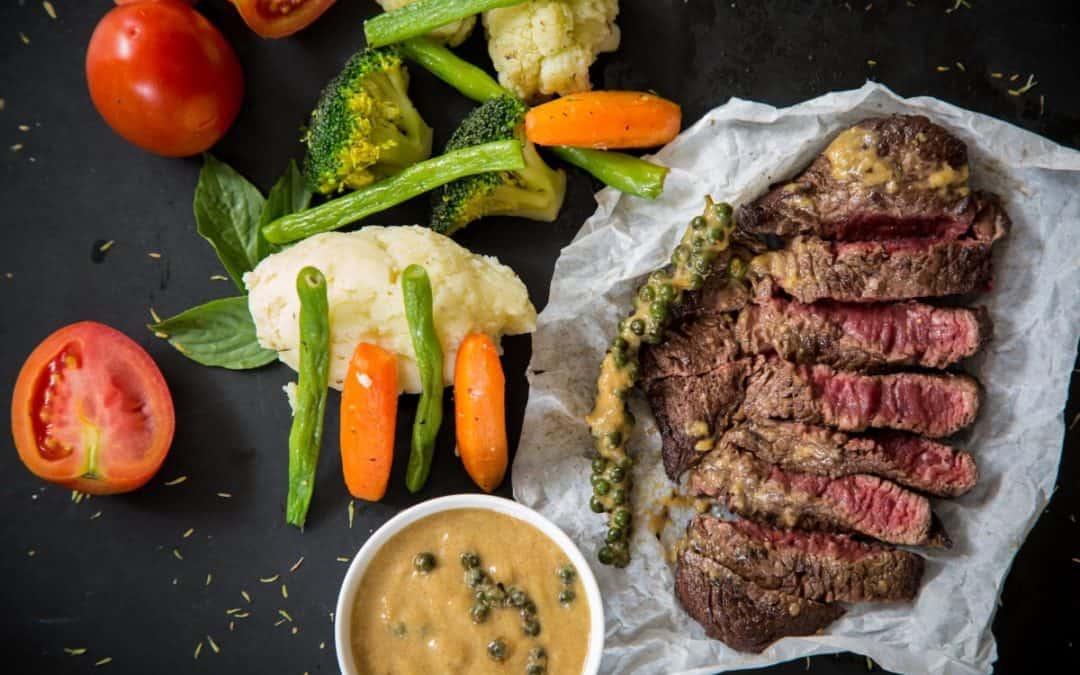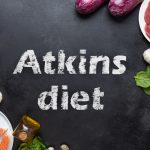
by Editor | Jun 9, 2011 | Weight Loss
As hoards of low-carb proponents invade the nutritional landscape, the increasingly tired low-fat guard seems to be giving way before their steady march and drumbeat.
This invasion is a preemptive strike to find and remove the stockpiled food molecules that could be used to attack your health and explode your weight. Low-carb campaign hawks insist they really are out there, ready to be launched against us at any moment. We know where they are –stockpiled in bread, rice, and potatoes…
International food observers are investigating the suspicious links between the axis-of-evil molecules and the thin, healthy people of the world. The French, for example, have flagrantly thumbed their noses at U.S. efforts once again by eating white bread baguettes twice per day, every day. Even worse, they steadfastly deny any relationship between daily carbs and weight or health problems. The Communist Chinese, ever a nettle for Western efforts, eat their high-carb rice every day, in blatant disregard of U.S. dietary resolutions.
Opinion at home is far from unanimous, as shown by scientists in a recent Tufts University study directly comparing the effectiveness of low-carb, low-fat, Weight Watchers, and Zone approaches. The question was simple. If done correctly, which theory actually works the best to lower weight?
The result? Micromanaging carbs was no more effective than counting up points or fats or anything else. Thus, the investigators came up empty-handed – the carb content of the food was irrelevant to weight loss.
Without definitive proof that carbs pose a threat, and with recent evidence showing their irrelevance to weight loss itself, carbs have become the dietary “weapons of mass distraction”. The resulting campaign to win the hearts and minds of the people, by stoking fears of these molecules, distracts us from the more immediate menace — domestic Biggie Sized habits of personal overconsumption.
Dietary WMD not only diverts us from more pressing problems at home, but many fear that pre-emptive invasions of this region of the nutritional world could lead to a quagmire of weight and health problems. Already the neo-Atkins’ intelligencia have rolled back fruit and vegetable consumption because of carb levels that – we now find out – were never a problem, to begin with.
It becomes clearer by the day that this nutritional war was founded upon dubious premises with no plan to win the long-term weight management peace. Will we have the courage to admit our past misunderestimates? Or will we “stay the course”? Only time, and our waistlines, will tell.
Dr. Will Clower is the award-winning author of The Fat Fallacy and founder of The PATH Curriculum, The PATH Online, and Newsletter.

by Editor | Jun 9, 2011 | Weight Loss
Being overweight has now moved from a social nuisance and domestic embarrassment to an official disease. The American Heart Association has announced obesity as a dangerous epidemic and a major risk for heart disease. More than 70% of US adults are overweight and that figure is rapidly increasing.
But by following three simple steps in your everyday life you do not have to become one of the above statistics. They are easy to follow without time constraints and don’t require a complete lifestyle change. These three steps are:…
1. Strength Training – Nowadays you do not have to live in a gym to put on functional muscle. Short High-Intensity sessions performed once a week are all that is required to elevate the metabolism for total fat burning.
2. A Small Decrease in Daily Calories – Diets don’t work (everybody knows this by now) but by decreasing your daily calories by a small amount, the weight loss is body fat alone and not lean tissue and water that is associated with crash diets. Remember fat accumulates on the body over a long period of time so it must come off slowly.
3. More Incidental Activity – Instead of driving try walking, walk instead of taking elevators or escalators; take the stairs, and so on. Just keep moving throughout the day.
Let’s have a look at the Three Steps in more detail below:
Strength Training
Between the ages of 20 and 70, the average person loses one-quarter of their muscle mass. Running, cycling or other aerobic sports will not prevent this loss. This is very disturbing because the muscles are the engines of the body and every pound of muscle burns 100 calories every day.
By adding just 10 pounds of functional muscle to your body, you will burn off 60 pounds of fat over the next year. Providing you take in the same amount of calories it will keep burning those extra pounds year after year! The amount of fat the body can burn is directly related to the lean muscle your body has.
If you don’t perform weight training to maintain your muscle tissue, you will lose half a pound of the fat-burning tissue per year after the age of 20 years. In simpler terms the more functional muscle you have on your body the more fat you will burn up.
Small Decrease in Daily Calories
For years now, we have been told to use dieting to rid the excess fat from our bodies.
The trouble with this concept is that the low-calorie restricted diet would throw the body into starvation mode, with the body holding onto the fat and using precious muscle tissue for energy.
This would then lower the metabolism causing greater muscle loss and when the diet is broken the unwanted fat would not only return but actually increase because of the lowered metabolism.
The way around this is to cut your daily calorie intake by a small amount of calories only. This will stop any starvation mechanisms from clicking in. You can do this by making up a seven-day eating plan and writing down everything you eat for the week, and then working out the calories you have eaten with a calorie counter. Divide this figure by seven and you have your daily calorie value.
Decrease daily calorie value by a couple of hundred calories per day and no more. This will generate slow weight loss and the majority will be fat loss only. The daily calories should be consumed during the day with small frequent meals.
The calories should come from a balanced diet (no fad diets please) with the required amount of micronutrients, vitamins, and minerals. As well as containing the required amounts of fiber, fat, protein, and carbohydrates.
More Incidental Activity
Fat is burned from the body when cells oxidize to release energy in the form of exercise. When the exercise is done slowly to moderately then the majority of energy is taken from the fat stores.
The key to effective aerobic training that burns off maximum fat is long-term consistency, not intensity. It doesn’t matter if you run a mile, jog a mile, or walk a mile you will burn exactly the same amount of calories.
The best exercise by far for the purpose of fat loss is fast walking either indoors on the treadmill or outdoors. Other aerobic activities are the treadmill, bike, climber, or any other training gear found in or out of the Gym.
Start with 100 minutes of controlled incidental activity per week increasing this to 200 minutes a week or more. In all other activities try to move, move, move. Try parking the car further away from your destination so you can walk the extra distance, and hide all your remote controls so you have to get up and change the channels manually. These all help burn those extra calories and body fat from your frame.
By incorporating these three simple fat loss steps into your everyday life you will not have to change your lifestyle or be subject to time constraints.
Gary is the author of several ebooks, including “Maximum Weight Loss in Ten Weeks” – the complete ebook and time-saving solution for burning away unwanted fat, and “Maximum Weight Gain in Ten Weeks” – easy-to-use and follow techniques that serve as a guide to muscle growth without having to “live in the gym”.

by Editor | Jun 9, 2011 | Weight Loss
Atkins Diet Foods – A Guide To Low-Carb Food Products
Atkins diet foods are many and varied, so much so that many people are surprised at just how many different kinds of foods are allowed on the Atkins diet food plan. You still have the responsibility to select appropriately and double-check the actual carb content of different foods, but you will quickly learn just how varied and interesting a low-carb lifestyle can be…
The Basics of the Atkins Diet Plan
The basic philosophy behind the Atkins diet plan is that if you switch to a low-carb diet your body’s metabolism will adjust and start to burn stores of fat. The process starts during the induction phase when you change your eating habits substantially so that you only consume 20 grams of net carbohydrates per day. Net carbs are determined by taking the total grams of carbs in a food and subtracting the number of fiber grams.
Once you are past the 14-day induction phase you then start to increase your daily net carb intake a little bit each week – starting at 25 grams per day, then the next week going to 30 grams per day, and so forth. As you raise your intake gradually, you pay attention to how much weight you continue to lose, until you find a level at which weight loss slows significantly or stops altogether. When you get close to your goal weight, you move into pre-maintenance and maintenance phases so that low-carb choices become part of your everyday lifestyle.
Defining Low-Carb Foods
Low-carb foods are those that have low enough levels of carbohydrates that they are considered Atkins diet foods. In general, meats, poultry, fish, leafy green vegetables, eggs, and butter form the core assortment of your low-carb food choices. Some cheeses and other dairy products are relatively low-carb but typically are not allowed in huge quantities while on the Atkins low-carb diet plan.
Remember, though, a food that is high in carbs but also high in fiber can be eaten as part of a low-carb lifestyle because the goal is to keep net carbs low, not just carbs as a whole. Make sure you read the labels of the foods you buy to determine the net carbs and consider carrying a pocket-sized carb counter with you to double-check the net carb counts in fresh foods.
As the Atkins diet plan exploded in popularity over the last few years, many food producers have tried to get in on the phenomenon by promoting their products as low-carb. The problem is, though, that many of these foods are not really low-carb. With the exceptions of certified Atkins diet foods, you should never just believe the large print on the front that says low carb. Always, always read the nutrition label and confirm for yourself whether or not the food is really low carb.
Finding Low Carb Foods
Finding low-carb foods is as easy as going to the grocery store, dropping into the convenience store located at your neighborhood gas station, or going to your favorite restaurant. Of course, some places will have a better selection of Atkins diet foods than others will, and some will also have more high-carb temptations, but there is no reason for you to visit a specialty store in order to get the low-carb foods you need.
Atkins Diet Foods from the Grocery Store
In the grocery store, you have a huge selection of foods, ranging from fresh to processed, all of which you can check for net carb count. Processed foods will have nutrition information printed on the outside box or label, making it easy to determine net carbs. Fresh foods are a bit more difficult because that information is not printed on the food item and usually not on the shelf label. You can certainly remember a few core fresh foods that are allowable, but a really good tool is to carry a carb counter in your purse or pocket so that you can check it if you have any questions.
Convenience Store
In a convenience store, you have to search a bit more for the low-carb Atkins diet plan foods. The big display of chips, candy, cookies, and more is not a place you are likely to find low-carb choices, but if you go a little further in you can usually find official Atkins snack bars, liquid shakes, or even some fresh foods that are low carb.
Restaurants
Restaurants can be a bit tricky because you do not always know what is in that great-tasting gravy or sauce, but most eating establishments now offer designated low-carb choices. If in doubt, order your meal without sauces and other add-ons that may have hidden carbs. When you find a restaurant that serves a good selection of low-carb foods that you enjoy, be sure to give the manager or owner positive feedback and make that establishment a primary choice whenever you want to dine out.
Atkins Diet Plan Meals
Atkins diet foods are much more than individual foods. They can be combined in many ways to create tasty and interesting meals, but even the most dedicated low-carb follower can get tired of the same old thing. The best way to keep your low-carb meals interesting is to seek out a variety of Atkins diet plan meals.
There are many cookbooks and recipe books available that are filled with low-carb meal choices using approved Atkins diet foods. All you have to do is mix and match each day or each week to keep a variety of meals on the table. Another reason to have a good cookbook or recipe book on hand is for those times when you are tired, running late, or otherwise need to come up with something low-carb to eat when maybe you do not feel like putting a lot of effort into it. These are the times when you will be most tempted to grab something that is not low-carb, so having a collection of Atkins diet food recipes close by can help get rid of that temptation.
About the Author:
Kevin Urban is the editor at http://www.atkins-diet-advisor.com, an easy-to-use resource on the Atkins Diet Plan
Copyright 2006 Atkins-Diet-Advisor.com

by Editor | Jun 9, 2011 | Weight Loss
According to Feng Shui, a chubby body – is “sick” energy, which is materialized in the form of being overweight. A tremendous appetite, which attacks us at home, can be connected with the wrong organization of one’s apartment space. If you tune your living space on your health strengthening, then it will help you to settle into shape…
Step 1.
Empty your settle into shape from … fat Chinese people who talk in the language of symbols. There’re no casual words in Feng Shui. In the phrase “excess weight” the main reason for surplus kilograms is in code – this is the word ‘excess”. It names the reason and at the same time suggests ways for this problem solution. Ancient Chinese people knew that our entourage – is a continuation of us. Rubbish in your house means rubbish in your body. The first and main step for growing thin according to Feng Shui lies in the removal of the things, which you haven’t been using for 6-12 months. The more excess things you have in your house, the bigger the excess weight of family members is, and the more often they fall sick. Excess things are not only cloth and shoes (5-6 hangers in a wardrobe for present-day cloth and shelves for underclothes will be quite enough for every woman, and the rest things, hanging in your wardrobe – represent fat), and also old toys, cream tubes and bottles of scents, children’s cloth, casual books, old medicines, broken plates, etc. It’s very hard to part with your favorite dress, in which you “grow thin”? Start with small things: throw away one excess thing a day – and grow thin!
Step 2.
Hide your kitchen doors “Hungry” energy ways are unsearchable. Our energy flows in the direction of our look, our wishes are born according to the things we see. Room, situated opposite to the front door receives the biggest flow of energy. If this is the kitchen, then, naturally, your wishes will be striving to go there. Those, whose kitchens are situated on the right or left of corridors, will feel slightly easier. But it’s still difficult to go by. So, you need to do 4 things.
The kitchen is the center of family life and quite often also a place for guests. You should think about the way to direct your guests’ footsteps to a sitting room. This can be some decorative element (a rug) or a bright flashlight (a bird, bell) in a sitting-room doorway, combining corridor and sitting room. Kitchen doors should be made of some opaque material or you can veil them with pendant curtains. When you enter the kitchen, your look shouldn’t stare at a bred-basket or fridge, not to stir up your appetite. If you cannot rearrange your fridge, you also can veil it with some décor. Or you can distract your look from food sources, putting something disposing to communication in the foreground, for example, a pile of magazines, phones, or flowers. Any black knick-knack (black is the color of Water), placed on the North of your kitchen, will switch your attention from carnal to spiritual. If a hostess is standing at a gas stove with her back to the entrance, then she needs to hang a mirror near the gas stove, so that she could see everybody entering the kitchen.
Step 3.
Reconcile gas stove with sink All sorts of energies are concentrated on a small kitchen area and they conflict with each other. The most “scandalous” neighbors are elements of Water and Fire (Fire energy is usually represented by the gas stove, toaster, and coffee machine. Water energy guides are fridge and sink). Conflict of these elements influences your figure, to be more exact: causes indigestion and at the same time ambitious plans of a head of a family. It’s clear who is a head of a family. And ambitious plans include jeans of half-child’s size, which you just have to put on by summer. A typical mistake of modern apartments is that gas-stove and sinks are situated near each other. This is quite economical: you boil spaghetti and pour off water at once. Skilled craftsmen even combine surfaces of a gas stove, table, and sink together. But Chinese people are against it! However, a method, which can solve this problem, doesn’t require re-planning: 2 hostile elements can be reconciled with each other with the help of the third element – Wood. Fence off the sink with some element, bringing “wooden” energy. This can be a wooden carving board, put sideways in a gap between a sink and table; a decorative tray, painted with plant ornament, or a live flower (if there will be a place for it there). Any green-colored object also brings a friendly energy of Wood.
Step 4.
Feed… mirror In China they say: “Have you already had a meal today?” instead of greeting – this shows their serious attitude to the process of eating. Feng Shui adherents eat according to Feng Shui too, and that’s why they don’t grow fat. This means, they…
– don’t eat in the same place where they cook (if you have no possibility to divide the kitchen into 2 zones – for cooking and eating – with a screen, then it’s better to eat in another room, except the bedroom).
– prefer ceramic crockery
– lay a round, octagonal, or oval table. These are optimal forms for better assimilation of food and harmony in the body and family. A table shouldn’t be made of transparent glass, it disseminates and let pass all good energy.
– eat in the following order: cold collations (potherbs, fish, bird, vegetables), first course (dishes of paste and rice noodle soup), dessert (fruits, cakes, pastries), and alcohol during the whole meal. Don’t be frightened! Chinese people don’t admit to any restrictive diets: they eat everything but in very small bird portions.
– increase the number of portions with the help of … mirrors! Food is reflected in mirrors, redoubled by sight, and this way a man eats a “double” portion, and, in fact, doesn’t overeat. Moreover, a “full-fed” mirror redoubles all riches of a house with gratitude. Mirrors can be hung in a room the way they would reflect the whole table, or you can put a small mirror near dishes. You won’t grow fat! Receipts according to Feng Shui Against adiposity Green peas (not canned) – 100 g, laminaria – 100 g. Water – 200 ml. Boil on a small fire for 5 minutes. Eat a ready portion once a day. The course is 14 days.
If you suffer from thyroid gland and blood circulation dysfunction 1. Laminaria – 200 g. Water – 200 ml. Boil for 5 minutes, and eat twice a day (cook a fresh portion every time). The course is 7 days. 2. Green haricot – 60 g, laminaria – 30 g, cinnamon – 6 g, unrefined sugar – 60 g, water – 200 ml. Boil on a small fire for 7 minutes. Eat a ready portion at once, once a day. The course is 14 days.
For better stomach work stimulation 1. Unpeeled potato – 250 g, honey – 10 g. Boil potato, and cook puree. Eat this mass in the morning on an empty stomach with honey. The course is 14 days. 2. Cabbage – 500 g, rice – 50 g, water – 200 ml. Boil rice till ready, add cabbage, and stew for 5 minutes. Eat half a portion twice a day. The course is 14 days.
About The Author
Yana Mikheeva

by Editor | Jun 9, 2011 | Weight Loss
“I tried that diet and lost 8 pounds in the first week!”
“I’ve gained three pounds in one day! It must have been the cookie I ate or maybe the mashed potatoes!”
Stepping on the scale can become an anxiety-filled event that leaves people wondering where they went wrong when the numbers don’t go in the right direction. This leads to panic and usually ends with blaming a particular food item that really wasn’t the culprit. Everyone who has been on a journey to lose weight has been there before. Even though you are following your plan and exercising regularly the number may go up 1-2 pounds or even up to 3-4 pounds creating unnecessary guilt that we have failed somehow. If it’s not always food that makes our weight creep up then what is it that causes these fluctuations on the scale?…
When trying to lose weight the scale often becomes the only measurement of success and this makes it difficult to remember that every time we step on a scale it is measuring every part of our physical being at that moment in time, which means it measures our fat, muscles, organs, tissue, and water weight. Body fat is not the only thing being measured. While organs and tissue don’t change much; fat, muscle, and water do change which can result in fluctuating numbers on the scale.
Water weight can affect your total weight anywhere from 1-10 pounds and sometimes even more. It is important to understand what kinds of dietary factors can make these fluid shifts happen. To start, many of the high protein, low carbohydrate diets can cause a dramatic shift in your water weight. This is because as you cut back carbohydrate intake your body starts breaking down the stored carbohydrates (glycogen) to use as energy, and this breakdown causes the body to excrete large amounts of water. Once the body begins to use stored fat for energy, weight loss slows. This is the reason why most people lose a significant amount of weight right away on a low-carb, high-protein diet. Extreme low-carb, high-protein diets can potentially lead to dehydration because of this significant fluid loss.
When a person following a low-carb plan eats a carbohydrate-rich food they can easily gain 1-3 pounds. However, this weight gain can be misleading because it is usually your body replenishing the fluid it lost and not gaining fat. This 3-pound fluctuation becomes frustrating for many people and they end up yo-yo-ing back and forth with fluid weight thinking that it must be the half cup of rice they had the night before that caused them to gain that 3 pounds when in fact eating the rice just allowed them to regain some of the fluid they had lost from following a strict low carb plan. The fact is carbohydrates do not affect your weight quite that simply. Excess carbohydrates can strongly stimulate insulin production, which promotes fat deposition and increases appetite. This kind of weight gain will happen gradually, not dramatically overnight.
Sodium is another dietary component that can lead to fluid gain. Sodium can cause the body to retain fluid, leading to these frustrating daily weight fluctuations. Some people are more sensitive to sodium than others. Watch your diet and see if your weight gain corresponds with a high-sodium meal the day before. For example, eating out in restaurants can often increase your sodium intake significantly.
The best way to tell if you are retaining fluid is to pay attention to your body. If you get indentations on your ankles and lower legs from your socks then you are retaining fluid. If you wear rings and they become tight and leave an imprint on your fingers when you take them off then you also retain fluid. Any kind of puffiness in your skin is a good indication of water weight.
The bottom line is that it takes 3500 calories to gain or lose 1 pound of body fat. This equates to an extra 500 calories a day over 7 days to gain a pound. This means if you gained 3 pounds in one day you can chalk it up to fluid weight otherwise you would have had to consume 10,500 extra calories that day which is not likely! True weight gain happens gradually and likewise, we lose it gradually. Check your weight weekly instead of daily and look for overall trends. If you are seeing dramatic daily changes in your weight, it is likely the ever-changing shifts of your body’s water weight.
© Meri Raffetto, 2005
About the Author:
Owner of Real Living Nutrition Services, Meri Raffetto is a Registered Dietitian and recognized professional in the area of nutrition and wellness. She specializes in weight management and offers online programs to help people reach their weight loss and health goals.

by Editor | Jun 9, 2011 | Weight Loss
Weight loss is a hot topic among college students today, especially considering the fact that most college freshmen gain half a pound every week! Since the schedule of college students is almost always hectic, weight loss efforts are not a priority. With so little extra time it is impractical to join the latest diet fad or commit to sweating in the gym for hours at a time. Are all college students destined to grow outward with each passing year, or is there a simple way for them to reclaim a healthy figure? If you struggle with your own battle of the bulge, read on for five sure-fire ways to drop a few of those unwanted pounds, and more importantly, learn how you can prevent packing them in the first place!…
TIP #1: Burn it in the AM
What is the first thing you do when you wake up each morning? Hit the snooze button for an extra ten minutes of sleep. What if I told you that taking those ten minutes to strap on your sneakers and walk briskly around campus would result in weight loss? It has been proven that aerobic activity done on an empty stomach forces your body to recruit energy from storage. This energy is stored in the form of fat in various parts of your body. Starting tomorrow take ten minutes out of your morning to walk briskly before breakfast. Do not sprint or try to walk as quickly as possible, simply walk at a pace that you could comfortably hold a conversation. This seemingly small activity, when done consistently, will produce surprising weight loss results!
TIP #2 Forget Your Late Night Snack
I know I am not the only one who enjoys eating a snack after dinner! Although comfort food seems to taste better right before bed, it is also more prone to stick with us when eaten late at night. It has been proven that not eating three hours before bed reduces fat storage throughout the night. If you go to bed at 10 pm, finish eating for the day no later than 7 pm. Once you have made this a habit you will be ecstatic over the long-term weight loss!
TIP #3 Kiss that Frappuccino Goodbye
What tastes better than a frothy, venti frappuccino smothered in whip cream and chocolate syrup? While blended coffee beverages have rapidly gained popularity with college students, their caloric tallies have been all but ignored. Whether you are an avid Starbucker, or only wander in for an occasional treat, it is important to know the truth about what you are drinking. The average Venti-sized frappuccino weighs in at 530 calories. This staggering number equals 2.5 bagels or one-third of the recommended daily calories for an average woman. Not only is this an extreme amount of calories to be consumed in a beverage but the calories come purely from sugar, which is easily stored as fat. Next time you are in line at the coffee shop and find yourself eyeing a sugary beverage, redirect your attention to the tea selection or stick with an old-fashioned cup of coffee.
TIP #4 Fuel Your Fire
Have you ever tended a campfire? You probably remember continuously adding sticks and branches to keep the fire from running out of fuel. Your body’s metabolism is similar in its need for constant fuel. Eating a small meal every three hours is a great way to keep your metabolism high all day long. When your metabolism is high you burn more calories throughout the day and are less likely to store fat. Rather than eating 2 or 3 large meals a day, and allowing your ‘fire’ to go out, giving way to hunger pains, try eating a small meal every three hours and be amazed at your weight loss results.
TIP #5 Curb Your Carbs
I’m sure sometime in the past year you have found yourself subjected to the testimony of a converted ‘low-carb’ enthusiast. While these people may look great it is definitely not the right diet for everyone. Extreme fatigue, crankiness, and downright impracticality are what make this diet a tough cookie to swallow. Cutting one or two carb-filled items out of your daily diet can make a huge difference in meeting weight loss goals. While I wouldn’t recommend throwing out your breadbasket entirely, consciously cutting carb-filled items out of your daily food intake is a great idea. If you normally have a sandwich for lunch make it open-faced, thus cutting out half of the bread. If you enjoy eating pasta for dinner reduce your pasta portion and add extra vegetables. These minor changes to your daily diet will prove themselves priceless when you step onto the scale!
It is you against the bulge, and now that you are armed with these 5 tips for easy weight loss, I am confident that you are going to win! Keep in mind that consistency is the key. The more effort that you put into implementing these 5 tips into your daily lifestyle the quicker the unwanted pounds will disappear! Want more information on college weight loss? Visit www.AvoidTheFreshman15.com today to download free information.
Diana Keuilian, Certified Personal Trainer, and author of “Avoid The Freshman Fifteen”, has a proven method for avoiding college weight gain. =









